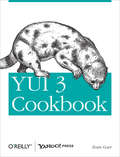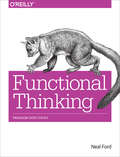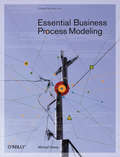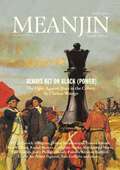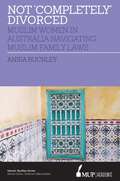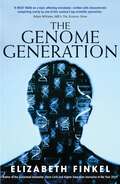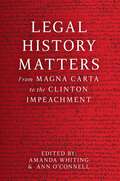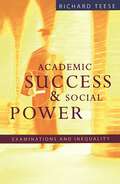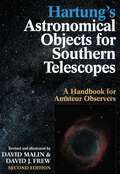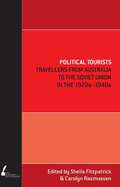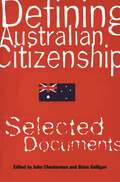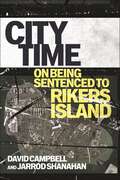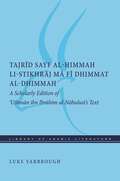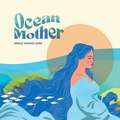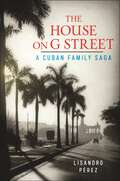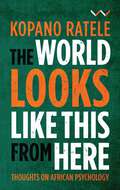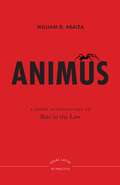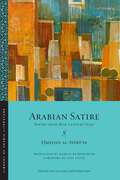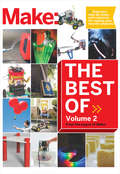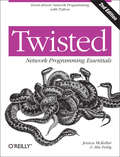- Table View
- List View
YUI 3 Cookbook: Writing Maintainable Applications
by Evan GoerSolve a wide range of problems in your web application quickly and efficiently with the Yahoo! User Interface Library (YUI). With this definitive, getting-started guide to version 3 of the popular open source JavaScript library, you’ll learn how to address many of the most common and challenging problems that web development presents.YUI 3 Cookbook introduces specific implementation patterns in the library, demonstrating granular solutions for everything from simple page effects to sophisticated web apps. Experienced users will learn how to create modules that load on demand; generate beautiful documentation; and write powerful and flexible Widgets, Models, and Views.Build YUI applications anywhere, from desktop browsers to touch-enabled mobile phones and backend Node.js environmentsLearn how YUI scales with your code base, keeping it modular and organizedApply animations, drag-and-drop, and other fully cross-browser UI effects with just a few lines of codeUnderstand YUI-powered DOM scripting, event management, and data transportDebug, profile, and unit test your JavaScript applicationGet a technical introduction to YUI, including module architecture, sandboxing, and component loadingBuild custom modules with YUI and publish them to the YUI Gallery"I was surprised to find out how much I didn't know until reading this book. There really isn't a better resource for learning or updating your YUI skills."- Nicholas C. Zakas, Author and YUI Contributor
Functional Thinking: Paradigm Over Syntax
by Neal FordIf you’re familiar with functional programming basics and want to gain a much deeper understanding, this in-depth guide takes you beyond syntax and demonstrates how you need to think in a new way. Software architect Neal Ford shows intermediate to advanced developers how functional coding allows you to step back a level of abstraction so you can see your programming problem with greater clarity.Each chapter shows you various examples of functional thinking, using numerous code examples from Java 8 and other JVM languages that include functional capabilities. This book may bend your mind, but you’ll come away with a much better grasp of functional programming concepts.Understand why many imperative languages are adding functional capabilitiesCompare functional and imperative solutions to common problemsExamine ways to cede control of routine chores to the runtimeLearn how memoization and laziness eliminate hand-crafted solutionsExplore functional approaches to design patterns and code reuseView real-world examples of functional thinking with Java 8, and in functional architectures and web frameworksLearn the pros and cons of living in a paradigmatically richer worldIf you’re new to functional programming, check out Josh Backfield’s book Becoming Functional.
Java Message Service
by Richard Monson-Haefel David A ChappellThis book is a thorough introduction to Java Message Service (JMS), the standard Java application program interface (API) from Sun Microsystems that supports the formal communication known as "messaging" between computers in a network. JMS provides a common interface to standard messaging protocols and to special messaging services in support of Java programs. The messages exchange crucial data between computers, rather than between users--information such as event notification and service requests. Messaging is often used to coordinate programs in dissimilar systems or written in different programming languages.Using the JMS interface, a programmer can invoke the messaging services of IBM's MQSeries, Progress Software's SonicMQ, and other popular messaging product vendors. In addition, JMS supports messages that contain serialized Java objects and messages that contain Extensible Markup Language (XML) pages.Messaging is a powerful new paradigm that makes it easier to uncouple different parts of an enterprise application. Messaging clients work by sending messages to a message server, which is responsible for delivering the messages to their destination. Message delivery is asynchronous, meaning that the client can continue working without waiting for the message to be delivered. The contents of the message can be anything from a simple text string to a serialized Java object or an XML document.Java Message Service shows how to build applications using the point-to-point and publish-and-subscribe models; how to use features like transactions and durable subscriptions to make an application reliable; and how to use messaging within Enterprise JavaBeans. It also introduces a new EJB type, the MessageDrivenBean, that is part of EJB 2.0, and discusses integration of messaging into J2EE.
Essential Business Process Modeling
by Michael HaveyTen years ago, groupware bundled with email and calendar applications helped track the flow of work from person to person within an organization. Workflow in today's enterprise means more monitoring and orchestrating massive systems. A new technology called Business Process Management, or BPM, helps software architects and developers design, code, run, administer, and monitor complex network-based business processes BPM replaces those sketchy flowchart diagrams that business analysts draw on whiteboards with a precise model that uses standard graphical and XML representations, and an architecture that allows it converse with other services, systems, and users.Sound complicated? It is. But it's downright frustrating when you have to search the Web for every little piece of information vital to the process. Essential Business Process Modeling gathers all the concepts, design, architecture, and standard specifications of BPM into one concise book, and offers hands-on examples that illustrate BPM's approach to process notation, execution, administration and monitoring. Author Mike Havey demonstrates standard ways to code rigorous processes that are centerpieces of a service-oriented architecture (SOA), which defines how networks interact so that one can perform a service for the other. His book also shows how BPM complements enterprise application integration (EAI), a method for moving from older applications to new ones, and Enterprise Service BUS for integrating different web services, messaging, and XML technologies into a single network. BPM, he says, is to this collection of services what a conductor is to musicians in an orchestra: it coordinates their actions in the performance of a larger composition. Essential Business Process Modeling teaches you how to develop examples of process-oriented applications using free tools that can be run on an average PC or laptop. You'll also learn about BPM design patterns and best practices, as well as some underlying theory. The best way to monitor processes within an enterprise is with BPM, and the best way to navigate BPM is with this valuable book.
Meanjin Vol 80, No 3
by Meanjin Quarterly'I've never been too impressed with the metaphoric mountain-top that Black race scholars and civil rights activists have typically been concerned with, of a promised land and a dream . . . As appealing as it sounds I don't believe that such a world will ever be possible in a settler colonial state . . . The place that they have built for themselves was established and is sustained by racial violence, and all of their institutions are unrelenting in their viciousness towards sovereign Black bodies.' In September Meanjin, Queensland academic, Munanjahli and South Sea Islander woman Chelsea Watego writes powerfully on the necessity of 'walking away' from colonial institutions and constructs, in order to find the truth of individual and collective power as an Indigenous Australian. It is, she argues, a fight against the very notion of race itself: 'We must stand in our own power, for it is only in knowing ours that we know the false claims of theirs. This is black power.' Patrick Allington writes on how Swedish artist Hilma af Klint 'has intruded upon my inner world and become a sort of guiding light'. Amal Awad surveys the world of romance novels for signs of orientalism and 'sheikh-lit'. Tom Griffiths paints a lingering portrait of the 'humble Australian bushman', John Blay, writer, walker, advocate of the natural world. Yumna Kassab writes on colonialism, conquest, occupation and dispossession: the modern Australian story. Plus: Ron Radford on the early colonial art in Tasmania, Prithvi Varatharajan on literary engagements with the non-human world, Rachel Weaver on currawongs, plus other essays from Carly Stone, Jacqui Shelton, Kath Kenny, Tim Dunlop and more. New fiction from: Kristian Radford, Jo Langdon, Mohammed Massoud Morsi, Hollen Singleton and Rose Allan. New poetry from: Marina Hazard, Andrew Sant, Anthony Lynch, Wen-Juenn Lee, Carl Walsh and more. Reviews include Melody Paloma on Evelyn Araluen's Dropbear, Scott Limbick on Martin McKenzie-Murray's The Speechwriter and Mira Schlosberg on Melissa Broder's Milk Fed.
Not 'Completely' Divorced: Muslim Women in Australia Navigating Muslim Family Laws
by Anisa BuckleyWithin Muslim communities in Australia, there is great diversity in Islamic practice and religiosity. When it comes to marriage and divorce, however, many Muslims still wish to observe religious procedures alongside civil ones, and while marriage is relatively straightforward, divorce raises more complications. The situation of women in 'limping' marriages in particular has raised debates among Muslims and the Australian public regarding the autonomy of Muslim women and the function of community family law processes. Based upon in-depth research with divorced Muslim women, community leaders and local religious authorities, Buckley reveals the complexities facing Muslim women in negotiating family expectations, cultural norms and traditional Islamic laws. Through their stories and experiences, the Muslim women in this book demonstrate how they are able to navigate the intricacies of religious and civil processes and in so doing, are reformulating what a 'complete' divorce looks like. Islamic Studies Series - Volume 29
Genome Generation
by Elizabeth FinkelThe year 2001 marked more than just the beginning of Stanley Kubrick's Space Odyssey, it marked the beginning of the genome era. That was the year scientists first read the 3 billion letters of DNA that make up the human genome. This was followed by a veritable Noah's Ark of genomes—sponges and worms, dogs and cows, rice and wheat, chimps and elephants—180 creatures aboard so far. So what have we learned from all this? How has it changed the way we practise medicine, grow crops and breed livestock? What have we learned about evolution? These are the questions science writer and molecular biologist Elizabeth Finkel asked herself four years ago. To find the answers she travelled the science frontier from Botswana to Boston, from Warracknabeal to Mexico and tracked down scientists working in the field. Their stories, told here, paint the picture of what it means to be part of the genome generation. 'The Genome Generation is absolutely riveting. These tales from the frontier are a 'must read' for everyone who wishes to understand our past—the logic of evolution—or take a peep into our exciting future at the creation of 'super plants' through 'digital agriculture'.'—R.A. Mashelkar, CSIR Bhatnagar Fellow and India President, Global Research Alliance
Legal History Matters: From Magna Carta to the Clinton Impeachment
by Ann O'Connell Amanda WhitingAs a field of study, legal history has an unsteady place in Australian law schools yet academic research and writing in the field of legal history and at the intersections of the disciplines of 'law' and 'history' is undergoing something of a renaissance, with rich and vibrant new works regularly appearing in specialist journals and scholarly monographs. This collection seeks to reinvigorate the study of history within the law school curriculum, by showcasing what students of the law can achieve when, addressing topics from the use of Magna Carta as history and precedent in sixteenth-century England to the political manoeuvres behind the failed impeachment of President Bill Clinton in late twentieth-century America, they seek to understand legal processes and institutions historically. The volume comprises outstanding legal history papers authored by graduate (final year JD) students in the Melbourne Law School. This collection is dedicated to two women who championed the teaching of legal history at the Melbourne Law School in the 1960s-Dr Ruth Campbell and Mrs Betty Hayes.
Academic Success And Social Power: Examinations and Inequality
by Richard TeeseA most significant text that says something new about how student achievement is shaped. Richard Teese cuts across much of the recent talk about reform and allows us to think about the issues afresh. His findings will fascinate all. Professor Simon Marginson, Monash University This eye-opening study of Australian secondary education looks beyond clich�s about 'excellence' to analyse the historically specific nature of the scholarly ideal against which successive generations of Australian students have been judged. Drawing on a wealth of strikingly original research, Richard Teese offers a penetrating analysis of Victorian secondary schooling in the half-century after World War Two. This was a era in which higher secondary schooling ceased to be the preserve of an elite and emerged as a system of mass education. It was also a period marked by successive waves of reform in curriculum and assessment. Yet, at the end of it all, Australians have been left with a sharply polarised system of schooling in which the most economically vulnerable populations of young people are also those most at risk of educational failure. This book asks the hard questions. Are our systems of secondary teaching -- and the expectations they place on students -- anachronistic in an age of mass education? How far is the curriculum itself responsible for the manifest disparities in achievement between sectors and regions, and between boys and girls? What has been the universities' role in the process of reform and counter-reform? And what have all these upheavals implied for the practice of teaching?
Hartung's Astronomical Objects For Southern Telescopes: A Handbook for Amateur Observers
by David Frew David MalinMany of the most spectacular and interesting astronomical objects are found in the magnificent southern skies. Professor E. J. Hartung first produced a comprehensive and highly respected guide for southern observers in 1968. The book was thoroughly revised, expanded in 1995, enhancing its essential character as an indispensable source of information for the active observer of the night sky. Nearly 200 objects are illustrated in black and white and much new background material has been included about the constellations and celestial coordinate systems as well as a more modern description of the stars, nebulae and galaxies. New tables include a 'southern Messier' list of objects. The authors' passion for their subject makes this a unique and inspirational book.
Political Tourists
by Sheila Fitzpatrick Carolyn RasmussenFor Socialists and many liberals, the Soviet Union of the 1920s-1940s was the site of the great Socialist Experiment. Most Australians who travelled there wrote about their extraordinary experiences, and the recent opening of the Soviet archives gave access to the Soviets' reactions to their visitors. Collecting the research of leading historians and writers, Political Tourists explores Soviet tourism through figures such as Eric Ashby, RM Crawford, Reg Ellery, Neill Greenwood, Esmonde Higgins, Katharine Susannah Prichard, Betty Roland and Jessie Street. Drawing on both Australian and Soviet archives, this is a unique insight into the Soviet experience in the 1920s-1940s.
Defining Australian Citizenship: Selected Documents
by John Chesterman Brian GalliganDuring our first century as a nation, citizenship—for a majority of Australians—has meant the enjoyment of progressive political, social, economic and legal rights. Yet many groups in our society have been denied the usual benefits of citizenship, including; the vote; equality before the law; freedom of speech, religion and movement; health care; education and a minimum wage.Unlike that of the United States of America, Australia's constitution provides no definition of the rights and obligations of its citizens. John Chesterman and Brian Galligan have searched Commonwealth and State legislation, parliamentary debates, law reports, official correspondence, United Nations conventions and works of historical scholarship, and provide surprising evidence to show that the concept of citizenship in Australia is an elusive but crucial one.It pervades Australian politics, and has determined the course of individual lives in many different areas, including female suffrage, the White Australia Policy, compulsory voting, Aboriginal rights, equal pay, sex discrimination, wartime internment and Menzies' attempt to ban the Communist Party.In Defining Australian Citizenship they reveal, for the first time, the complexity of Australian legislation as it has tried, over the years, to accommodate changing ideas about exactly what citizenship entails and who is, or is not, eligible for it.
Dismissal Dossier: The Palace Connection: Everything You Were Never Meant to Know about November 1975
by Jenny HockingHere is the definitive story of the most divisive episode in Australia's history—the dismissal of Gough Whitlam's Labor government. In her award-winning biography of Gough Whitlam, Jenny Hocking revealed the astonishing secret story of the planning and the people behind the dismissal. Never before released material from Sir John Kerr's private papers revealed the secret role of High Court justice Sir Anthony Mason and Kerr's collusion with Malcolm Fraser. Now, Hocking's forensic investigations reveal explosive files in the UK National Archives that add a disturbing dimension to this untold story. Hocking reveals the Palace connection and unravels the web of intrigue behind the British Office's link to the dismissal of the Whitlam government in the name of the Queen. She brilliantly brings together this hidden history—a mixture of the unknown, the overlooked and the clandestine—to write a political thriller: the story you were never meant to know.
Foucault Primer: Discourse, Power and the Subject
by Alec McHoul Wendy GraceWho are we today? That deceptively simple question continued to be asked by the French historian and philosopher, Michel Foucault, who for the last three decades has had a profound influence on English-speaking scholars in the humanities and social sciences. A Foucault Primer is designed for undergraduates and others who feel the need of some assistance when coming to grips with Foucault's voluminous and complex writings. Instead of dealing with them chronologically, however, this book concentrates on some of their central concepts, primarily Foucault's rethinking of the categories of discourse, power and the subject (or subjection). Foucault's writings contribute collectively to what he himself calls 'an ontology of the present'. His historical research was always geared towards showing how things could have been (and still could be) otherwise. This is especially the case with respect to the production of human subjects.
City Time: On Being Sentenced to Rikers Island
by David Campbell Jarrod ShanahanA unique insider perspective of daily life in New York City’s most notorious house of correctionWhile most people behind bars at Rikers Island are detainees awaiting the settlement of their cases, a smaller population have already been convicted and are serving sentences deemed too short for the state prison system. These stints are called “city time.” The sentences range from a few days to a year, and are generally served within large, open dormitories lacking in privacy and sanitation. Within these spaces, incarcerated people reproduce an elaborate set of rules, rituals, and relationships, as a means both of survival and of giving meaning to the time taken from them.Written by David Campbell and Jarrod Shanahan, who both served sentences at Rikers, City Time reflects its authors’ personal experiences and observations of short-stay incarceration to present a nuanced and vivid account of a social world kept locked away from the public eye. The authors reconstruct the daily realities of sanitation, nourishment, recreation, work, and other necessary activities, and emphasize the complex interpersonal relationships that emerge in response to city time. Simultaneously, they paint a grim and urgent picture of structural racism, class violence, and the disastrous lack of mental health and substance abuse resources for poor New Yorkers, who are shuttled in and out of city time sentences as “frequent flyers.”Beginning with the authors’ own processes of intake, and ending with the ritual of late-night release, City Time takes readers behind the splashy headlines to depict, in intimately human terms, the rich and variegated social world unfolding, at this very moment, on Rikers Island.
Tajrid sayf al-himmah li-stikhraj ma fi dhimmat al-dhimmah: A Scholarly Edition of 'Uthman ibn Ibrahim al-Nabulusi's Text (Library of Arabic Literature #25)
by Luke YarbroughTajrid sayf al-himmah li-stikhraj ma fi dhimmat al-dhimmah is a scholarly, Arabic-only edition of a text by 'Uthman ibn Ibrahim al-Nabulusi, which is also available in English translation from the Library of Arabic Literature as The Sword of Ambition. In this work addressed to the Ayyubid sultan, al-Nabulusi argues against employing Coptic and Jewish officials, leaving no rhetorical stone unturned as he pours his deep knowledge of history, law, and literature into the work.An Arabic edition with English scholarly apparatus.
Ocean Mother
by Arielle Taitano LoweOcean Mother tells the story of a young woman’s decision to heal herself, her family, and her home. The poet gives voice to her experience as a CHamoru girl raised in the Pacific Island of Guåhan (Guam), located in Micronesia. Weaving together narratives of family, environment, Indigenous identity, decolonial love, and her CHamoru culture, the poet goes on a journey inward and overseas. She explores the relationships between culture and identity, colonialism and inherited trauma, sense of place and generational healing.
The House on G Street: A Cuban Family Saga
by Lisandro PérezThe unforgettable story of a family swept into history by the Cuban RevolutionIn The House on G Street, award-winning author Lisandro Pérez tells Cuba’s story through the lens of a single family: his own. His book relays the tales of two officers who fought against the Spanish for Cuban independence; a plantation owner who smuggles himself onto a ship; families divided by political loyalties; an orphaned boy from central Cuba who would go on to amass a fortune; a fatal love triangle; violence; and the ever-growing presence of the United States. It all culminates with an unforgettable portrait of a childhood spent in a world that was giving way to another one. The House on G Street is a unique depiction of one of the most consequential events of the twentieth century, told through generations of ancestors whose lives were shaped by dramatic historical forces.Pérez disentangles the complex history by following his family’s thread, imbuing political events with personal meaning. Their story begins with emigration to Cuba and follows the waning years of the colony. The end of Spanish rule gives way to pervasive American influence, and Perez’s family turned to New York as they adapted to the realities of a new republic with compromised sovereignty: privileged educations in boarding schools in Long Island and the Hudson Valley; a family business that took tobacco leaves from the soil of central Cuba to the docks of the East River; and grandparents who met and fell in love one night in the Upper West Side of Manhattan. His family learned to navigate the uneasy relationship between the United States and Cuba, a relationship that was destined to end in dramatic fashion. More than sixty years later, the Cuban Revolution resists receding into the past, sparking continued discussion, debate, and reinterpretation. There is a great deal that is known about the broad historical conditions that inexorably pushed Cuba towards revolution, but much less is known about the people who lived that dramatic history. It is a story that, if not recovered and told, will be lost, for Pérez’s ancestors lived in a world that no longer exists, swept away by a tide of revolutionary change. The House on G Street follows a family whose lives mirror the history of a nation. The result is a compelling blend of memoir and in-depth historical research, a remarkable new view of the path to revolution as seen from the first person.
The Procrastination Economy: The Big Business of Downtime
by Ethan Tussey2018 Outstanding Academic Title, given by Choice MagazineHow mobile devices make our in-between moments valuable to media companies while also providing a sense of control and connectionIn moments of downtime – waiting for a friend to arrive or commuting to work – we pull out our phones for a few minutes of distraction. Just as television reoriented the way we think about living rooms, mobile devices have taken over the interstitial spaces of our everyday lives. Ethan Tussey argues that these in-between moments have created a procrastination economy, an opportunity for entertainment companies to create products, apps, platforms, subscription services, micropayments, and interactive opportunities that can colonize our everyday lives.But as businesses commoditize our free time, and mobile devices become essential tools for promotion, branding and distribution, consumers are using these devices as a means of navigating public and private space. These devices are not just changing the way we spend and value our time, but also how we interact with others and transform our sense of the politics of space.By examining the four main locations of the procrastination economy—the workplace, the commute, the waiting room, and the “connected” living room—Ethan Tussey illuminates the relationship between the entertainment industry and the digitally empowered public.
The World Looks Like This From Here: Thoughts on African Psychology
by Kopano RateleBuilds a compelling case for thinking and doing psychology differently in and for AfricaWhat does the world look like from Africa? What does it mean to think, feel, express without apology for being African? How does one teach society and children to be African—with full consciousness and pride? In institutions of learning, what would a textbook on African-centred psychology look like? How do researchers and practitioners engage in African social psychology, African-centred child development, African neuropsychology, or any area of psychology that situates African realities at the centre? Questions such as these are what Kopano Ratele grapples with in this lyrical, philosophical and poetic treatise on practising African psychology in a decolonised world view. Employing a style common in philosophy but rarely used in psychology, the book offers thoughts about the ideas, contestation, urgency and desire around a psychological praxis in Africa for Africans. While setting out a framework for researching, teaching and practicing African psychology, the book in part coaxes, in part commands and in part urges students of psychology, lecturers, researchers and therapists to reconsider and reach beyond their received notions of African psychology.
Systems Thinking With Flowers
by Krystal LanguellA poetry collection about conspiring to do right within the constraints of inherited structures, Systems Thinking with Flowers critiques unearned authority in its many guises. In two sections, the book chronicles the complex emotional gymnastics required for existence in male-dominated and colonialist environments, such as professional sports, museums, and other institutions.
Animus: A Short Introduction to Bias in the Law
by William D. AraizaAn introduction to the legal concept of unconstitutional bias.If a town council denies a zoning permit for a group home for intellectually disabled persons because residents don’t want “those kinds of people” in the neighborhood, the town’s decision is motivated by the public’s dislike of a particular group. Constitutional law calls this rationale “animus.”Over the last two decades, the Supreme Court has increasingly turned to the concept of animus to explain why some instances of discrimination are unconstitutional. However, the Court’s condemnation of animus fails to address some serious questions. How can animus on the part of people and institutions be uncovered? Does mere opposition to a particular group’s equality claims constitute animus? Does the concept of animus have roots in the Constitution?Animus engages these important questions, offering an original and provocative introduction to this type of unconstitutional bias. William Araiza analyzes some of the modern Supreme Court’s most important discrimination cases through the lens of animus, tracing the concept from nineteenth century legal doctrine to today’s landmark cases, including Obergefell vs. Hodges and United States v. Windsor, both related to the legal rights of same-sex couples. Animus humanizes what might otherwise be an abstract legal question, illustrating what constitutes animus, and why the prohibition against it matters more today than ever in our pluralistic society.
Arabian Satire: Poetry from 18th-Century Najd (Library of Arabic Literature #62)
by Ḥmēdān al-ShwēʿirSatirical verse on society and its hypocrisiesA master of satire known for his ribald humor, self-deprecation, and invective verse (hijāʾ), the poet Ḥmēdān al-Shwēʿir was an acerbic critic of his society and its morals. Living in the Najd region of the Arabian Peninsula, Ḥmēdān wrote in an idiom widely referred to as “Nabaṭī,” here a mix of Najdī vernacular and archaic vocabulary and images dating to the origins of Arabic poetry. In Arabian Satire, Ḥmēdān is mostly concerned with worldly matters and addresses these in different guises: as the patriarch at the helm of the family boat and its unruly crew; as a picaresque anti-hero who revels in taking potshots at the established order, its hypocrisy, and its failings; as a peasant who labors over his palm trees, often to no avail and with no guarantee of success; and as a poet recording in verse how he thinks things ought to be.The poems in Arabian Satire reveal a plucky, headstrong, yet intensely socially committed figure—representative of the traditional Najdī ethos—who infuses his verse with proverbs, maxims, and words of wisdom expressed plainly and conversationally. Ḥmēdān is widely quoted by historians of the Gulf region and in anthologies of popular sayings. This is the first full translation of this remarkable poet.An English-only edition.
Best of Make: 65 Projects and Skill Builders from the Pages of Make: (Volume #2)
by The Editors of Make:After ten years, Make: has become one of most celebrated magazines to hit the newsstands, and certainly one of the hottest reads. If you're just catching on to the Maker Movement and wonder what you've missed, this book contains the best projects and articles from the magazine. Find out what keeps Makers coming back to Make: with this assortment of DIY projects and articles selected by Make:'s editors. Learn to:Outfit your workshop and make some must-have toolsBuild electronic projects from actuators to antennaeMake things with Arduino and Raspberry PiCreate drones and robotsBuild noisemaking projects and musical instrumentsAugment your photo and video capabilitiesMake your own food, soap, ink, and more
Twisted Network Programming Essentials: Event-driven Network Programming with Python
by Abe Fettig Jessica McKellarGet started with Twisted, the event-driven networking framework written in Python. With this introductory guide, you’ll learn the key concepts and design patterns to build event-driven client and server applications for many popular networking protocols. You’ll also learn the tools to build new protocols using Twisted’s primitives.Start by building basic TCP clients and servers, and then focus on deploying production-grade applications with the Twisted Application infrastructure. Along the way, you can play with and extend examples of common tasks you’ll face when building network applications. If you’re familiar with Python, you’re ready for Twisted.Learn the core components of Twisted servers and clientsWrite asynchronous code with the Deferred APIConstruct HTTP servers with Twisted’s high-level web APIsUse the Agent API to develop flexible web clientsConfigure and deploy Twisted services in a robust and standardized fashionAccess databases using Twisted’s nonblocking interfaceAdd common server components: logging, authentication, threads and processes, and testingExplore ways to build clients and servers for IRC, popular mail protocols, and SSH
